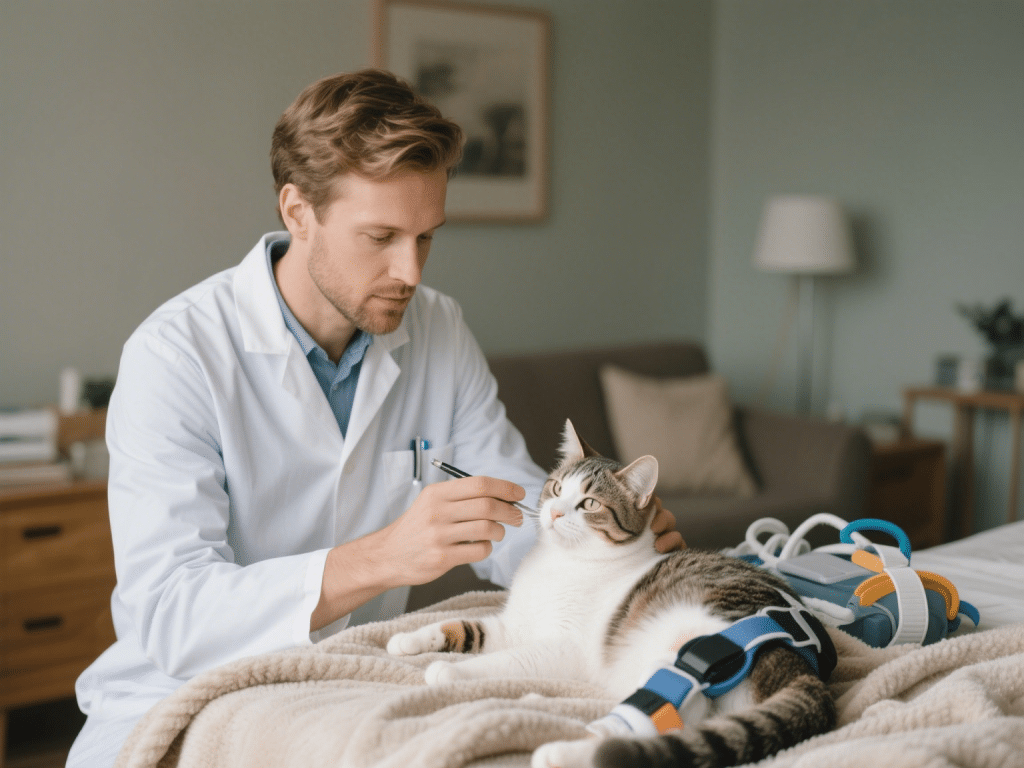
Calming Techniques for Nervous Rabbits: From Handling to Habitat
In my decade of rabbit rescue and fostering, I’ve met countless shy or fearful bunnies w...

Post-surgical care is a delicate period for cats, requiring meticulous pain control and supportive home management to prevent complications and ensure swift healing. Studies indicate that inadequate analgesia can delay wound healing and exacerbate stress¹⁰. Drawing from 15 years as a veterinary surgeon, this guide outlines best practices for pain management, environmental modifications, and monitoring during feline post-operative recovery.
1. Proactive Pain Management
Pre-Emptive Analgesia: Administer NSAIDs such as meloxicam or robenacoxib immediately post-op, at dose rates of 0.05 mg/kg once daily².
Opioids for Severe Pain: Buprenorphine (0.01–0.02 mg/kg every 8–12 hours) can be continued at home for 2–3 days for invasive procedures.
Multimodal Approach: Combine NSAIDs, opioids, and local anesthetic nerve blocks intra-operatively to minimize systemic side effects.
2. Wound Care & Bandaging
Protective Collars: Use a soft-flex Elizabethan collar to prevent self-trauma.
Bandage Checks: If bandaged, inspect daily for swelling or discharge. Change per veterinary instructions.
Topical Antiseptics: Use chlorhexidine wipes around incision (avoid direct application on suture line) to reduce bacterial colonization.
3. Nutritional Support
Appetite Stimulation: Offer palatable, warm wet food or appetite stimulants like mirtazapine (1.875 mg per cat every 48 hours) if anorexia persists³.
Hydration Monitoring: Encourage water intake; consider subcutaneous fluids if dehydration signs appear (strong skin tent, sunken eyes).
4. Environmental Adjustments
Quiet Recovery Space: Provide a warm, dimly lit area away from other pets and foot traffic. Use fleece blankets to maintain body temperature.
Low-Entry Litter Box: Offer a box with low sides for easy access; use unscented, non-clumping litter.
5. Activity Restriction & Gradual Mobilization
Strict Confinement: Limit jumping and running for 7–14 days, depending on procedure.
Supervised Short Walks: For indoor housetrained cats, allow brief outings outside the carrier to stretch after 3 days, under observation to prevent suture strain.
6. Monitoring & When to Call the Vet
Vital Signs Tracking: Check temperature daily—fever (>103°F), lethargy, or inappetence beyond 48 hours warrants veterinary reevaluation.
Incision Inspection: Watch for redness, swelling, discharge, or dehiscence.
Behavioral Changes: Excessive vocalization, hiding, or aggression can signal pain or complications.
Case Example: “Mittens”
Following ovariohysterectomy, Mittens received meloxicam and buprenorphine with local bupivacaine blocks. Her owner maintained a quiet recovery room with blankets and low litter boxes. Mittens’ appetite returned on day two, and her incision healed cleanly, with suture removal at day ten and full activity by week three.
Conclusion
Optimizing post-surgical recovery in cats hinges on anticipatory pain control, diligent wound care, nutritional and environmental support, and vigilant monitoring. By employing a multimodal analgesic strategy, creating a soothing recovery environment, and recognizing red-flag signs early, you’ll promote a smooth, comfortable healing journey for your feline patient. Always follow your veterinarian’s specific instructions and reach out with any concerns—timely intervention is key to successful outcomes.

In my decade of rabbit rescue and fostering, I’ve met countless shy or fearful bunnies w...

Aquatic turtles are notorious for producing copious waste. In my role consulting reptile s...

With years of rabbit rescue volunteering under my belt, I’ve seen firsthand how a lack o...

Ear infections (otitis) are common in domestic rabbits, especially lop-eared breeds where ...

Houseplants breathe life into your home — but many popular varieties can be toxic to cat...

IntroductionScratching is an instinctive behavior for cats to maintain claw health, stretc...
Comments on "Easing Post-Surgical Recovery in Cats: Pain Management & Home Care" :